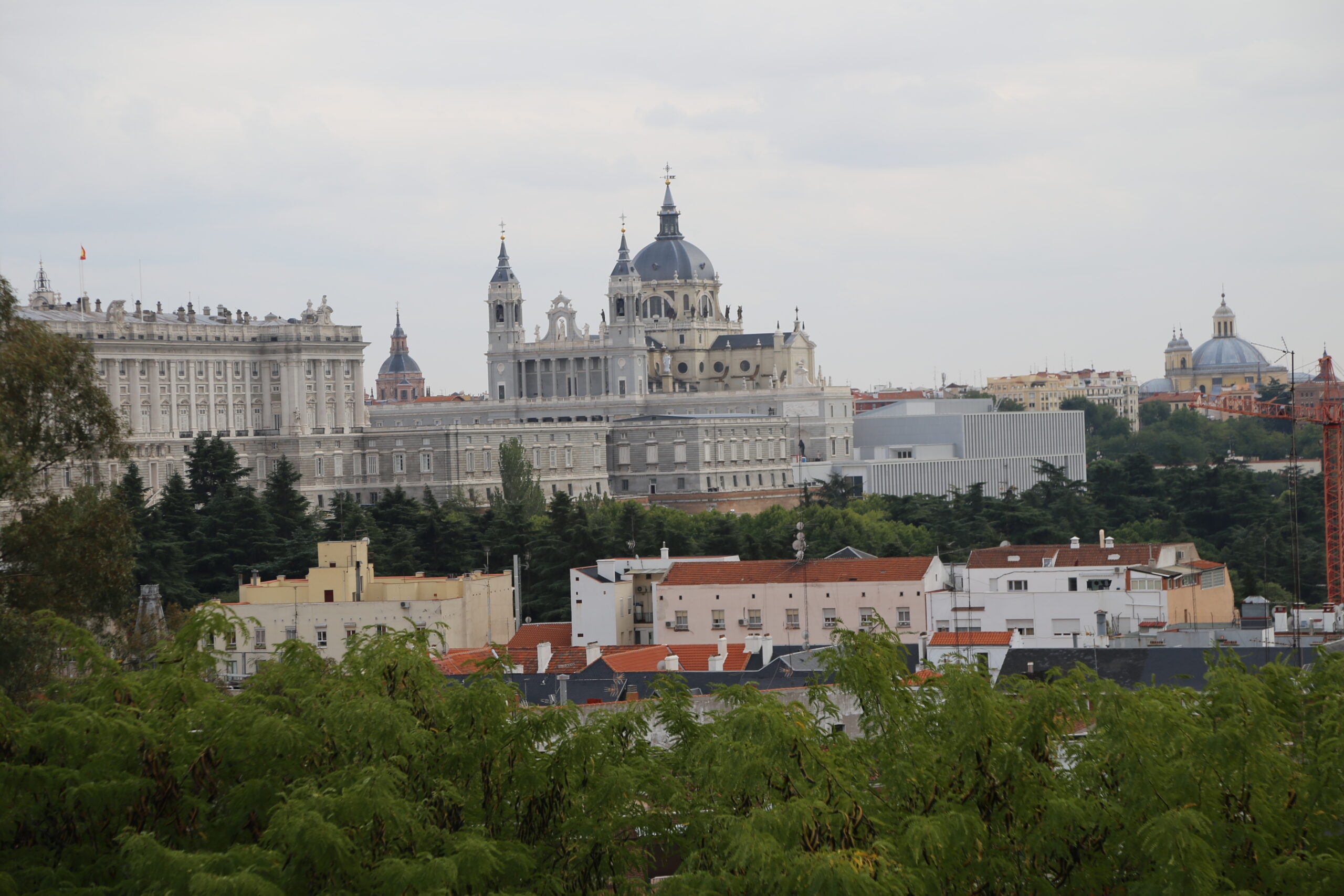From the terrace beside the Temple of Debod, I found myself looking out over Madrid in a way I hadn’t expected. The temple itself had already left me a little awestruck, standing in front of something so old and so out of place yet perfectly at home. But then I turned toward the edge of the park, and suddenly the city opened up beneath me—the Royal Palace dominating the skyline, the Almudena Cathedral rising proudly beside it, and the rooftops of Madrid spilling forward like a patchwork of terracotta and stone. It was one of those moments in travel when you don’t just see a view, you feel it.

The palace is massive from this angle, stretching wide with its pale walls and countless windows, each one a silent witness to centuries of Spanish royalty. I couldn’t help but imagine the ceremonies, the power, and even the ordinary human stories that must have played out inside those walls. Next to it, the Almudena Cathedral stood tall, its towers and domes reaching up as though in gentle competition with the palace. The contrast between the two—the political and the spiritual—made the view even more compelling. Behind them, other domes and spires dotted the horizon, each carrying its own piece of Madrid’s layered history.
What made the view especially personal for me was the perspective it offered. In the foreground were the everyday rooftops of modern Madrid—whitewashed buildings, little balconies, red-tiled roofs, laundry lines, and antennas reaching skyward. They looked so modest, even fragile, set against the grandeur of the palace and cathedral. It was a reminder that cities are never just monuments or postcard-perfect landmarks. They are living, breathing places where ordinary lives unfold in the shadows of history. And from this vantage point, I felt both a visitor and a participant, aware that the city I was gazing upon was not only for looking at, but also for being part of, even briefly.
I stood there for a long time, resting my arms on the railing, just letting the scene sink in. The light was muted, the kind of overcast sky that softens everything without dulling it. I actually liked it this way—it made the palace and cathedral feel less like tourist attractions and more like guardians of the city, timeless and steady. The breeze carried voices from the park, the chatter of visitors, the laughter of children, and even the distant hum of traffic, all blending together into the quiet symphony of a city going about its life while I stood above it, lost in thought.
What struck me most was the balance. Behind me, the temple from Egypt stood as an emblem of something foreign, transported, preserved. In front of me, the very essence of Madrid stretched out, rooted in its own history and culture. And I was standing between the two, suspended in that odd, beautiful space where past and present, foreign and familiar, all overlap. Travel has a way of giving you these unexpected juxtapositions, and this was one of those times.
As I finally turned to leave, I felt a little reluctant. There’s something addictive about a view that feels both majestic and intimate. From the Temple of Debod, Madrid had revealed itself to me not as a sprawling capital, but as a layered, living city, with palaces and cathedrals sharing the horizon with rooftops and daily life. It felt like an invitation—not just to admire from afar, but to keep walking, keep exploring, and keep finding the stories tucked behind every dome and window.
Leave a Reply